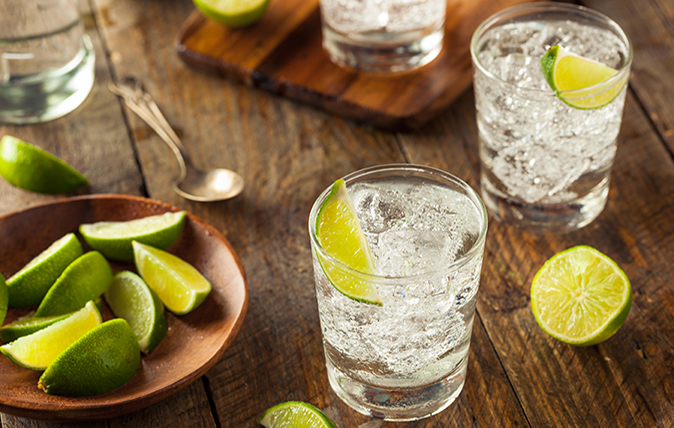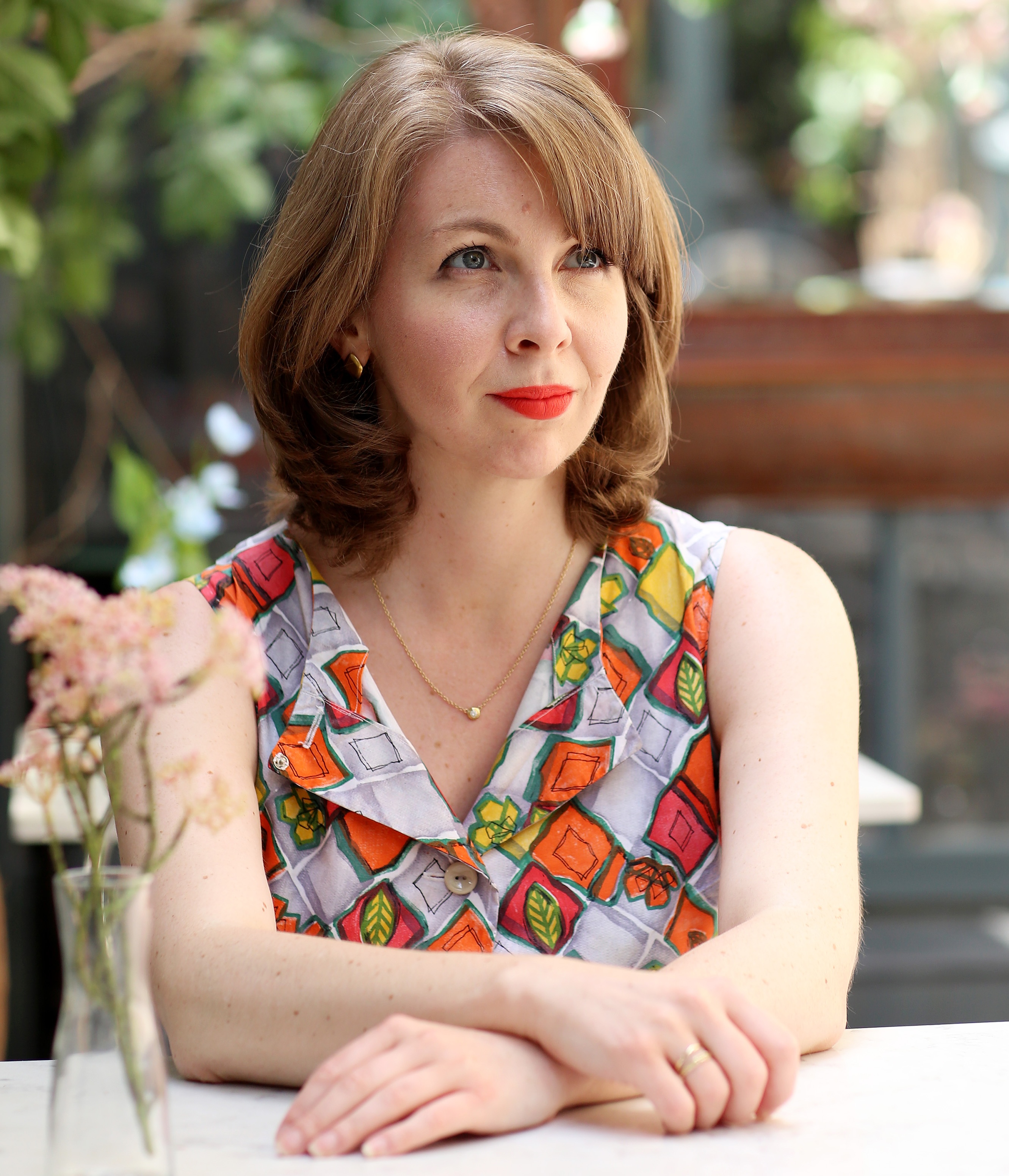Create your own bespoke gin
A bespoke gin will take your G&Ts to a whole new level this summer. Emma Hughes spends an evening blending her own


A bespoke gin will take your G&Ts to a whole new level this summer. Emma Hughes spends an evening blending her own
If you look over here, you’ll see a chap in a wheelbarrow having gin poured down his neck,’ says Del Jones. ‘And in the opposite corner, there’s a man beating himself over the head with a pair of bellows.’
We’re in the upstairs parlour of The Ginstitute on west London’s Portobello Road, getting ready to blend our own bespoke gins—and, fortunately, the scenes of carnage we’re surveying are only in a Hogarth print. Mr Jones, our charming and knowledgeable host for the evening, is giving us a run-down of gin’s history, charting its rise from Mother’s Ruin to the cognoscenti’s spirit of choice. We Britons first got a taste for juniper-flavoured spirits during the 16th century, when English troops stationed in the Netherlands would swig the local tipple before going into battle—hence Dutch courage.
Back home, the first UK-made gins were tooth-achingly sweet and strong (think cheap grappa), with botanicals added to mask the taste of the rough base-spirit. It was this that Hogarth’s subjects were enjoying; at the time of Gin Lane, publicans would put up signs reading: ‘Drunk for a penny, dead drunk for tuppence, clean straw for free.’
How things have changed. Barely a week seems to go by without a new small-batch, artisan gin being launched and The Ginstitute’s Portobello Road Gin, which first went on sale in 2011, is currently sold in 14 countries. As well as creating specialty gins for bars and restaurants (including two- Michelin-starred The Ledbury, just up the road), the team allows customers like me to blend one-of-a-kind bottles, using their library of distillates— of which more later.
Pointing out the various different historic gins that line the walls in the parlour, Mr Jones asks us to think about what sort of spirit we want. Do we prefer our gin sweet, aromatic or dry? And what do we like to drink it with? Having been marked for life by my first martini (mixed by someone who, like Alfred Hitchcock, held that the perfect one consisted of five parts gin and a quick glance at some vermouth), I know I’ll be sipping my gin with tonic—beyond that, I haven’t the foggiest.
With the theory taken care of, we make our way up a winding flight of stairs to the blending laboratory, where we’re introduced to Copernicus II, The Ginstitute’s copper pot still. It’s in its belly that flavourless alcohol made from English wheat comes together with purified water and the ‘Big Four’ botanicals—juniper (which must be the dominant flavour in gin), coriander seed, angelica and orris root—to create the spirit that we’ll be sprucing up.
Exquisite houses, the beauty of Nature, and how to get the most from your life, straight to your inbox.
We perch on bar stools in front of shelves of glass apothecary jars with taps. They contain the distillates (botanicals that have been steeped in neutral grain spirit) that give The Ginstitute’s bespoke gins their unique characters. The jars labelled ‘Lavender’ and ‘Asparagus’ come as a surprise, but Mr Jones says he and his colleagues will flavour gin with anything— well, almost. ‘We’ve tried distilling cucumber every which way and it hasn’t worked,’ he sighs. He passes around samples to help us decide how we’d like our gin to taste: jars of dried petals and peels for sniffing and tiny glasses for sipping.
After getting to know the Big Four (the orris root reminds me, for some reason, of my childhood guinea pig’s hutch), we move on to more esoteric flavours. Mr Jones suggests we pick between one and six, and explains that a gin should have four ‘waves’ of flavour, from the lively top notes (such as coriander) to the ephemeral, floral notes and the lingering finish. There’s liquorice and fennel (shades of sambuca), mace, cinnamon, cassia bark and nutmeg, with its sweet fire.
We’re advised to add at least one spice to lend depth and character, plus a citrus distillate for balance. The ones we can pick from include Moroccan orange, lime peel, lemongrass (‘too much of this one and it’ll taste like Toilet Duck,’ we’re warned) and bergamot. ‘Where do you source the fruit from?’ one of the other attendees asks. ‘Ocado,’ replies Mr Jones.
Finally, we’re talked through the exotics, such as wormwood (which imparts a creamy bitterness and dryness) and lapsang souchong tea. Behind us is a shelf loaded with experimental distillates: honey, almond and—this being 2016—avocado. Looking out of the window at the people sipping G&Ts in their shirtsleeves, I decide that I want a summery gin—not a crisp, anyone-for-croquet one, but something more Mediterranean. I ask Mr Jones if he’ll blend me a gin with Moroccan orange, cinnamon, bergamot and, because I still want it to taste a little like home, Yorkshire Gold tea. He nods his approval: ‘Very nice. That’ll be an easy drinker.’
Once we’ve all given Mr Jones our orders, he gets to work, adding a splash of this and a dash of that to the bottles of ‘basic’ gin he’s lined up. He makes it look easy, but even half a percentage less or more of a distillate can make a huge difference to the end product—like a chef, he knows exactly how different flavours sit together, down to the last millilitre.
There’s no way I could replicate his performance at home, but, luckily, I’ll never need to: The Ginstitute stores the ‘recipe’ for every custom blend and, for £35 a pop, you can order as many bottles as you like. Satisfied, Mr Jones hands me a glass of my gin to taste. It’s exactly what I was after: not overpowering, but mellow and slightly spicy, with a warmth that’s—yes, really—sunny.
As I sip it, I can almost hear the chink of ice cubes in a tumbler and the foaming gulps of tonic filling it. The Ginstitute, 171, Portobello Road, London W11 (020–3588 7800; www.theginstitute.com).
The Gin Blending Experience costs £110 per person, with sessions running daily at various times from Tuesday to Sunday
Places to blend your own gin
The Cambridge Distillery After a flight of blind tastings with a master distiller, a unique gin will be tailored especially for you. It can be produced a bottle at a time or in bigger batches for a special occasion. £400 (01223 269209; www.cambridgedistillery.co.uk)
The Cotswold Gin Pantry and Bar At The Plough Hotel in Clanfield, Oxfordshire, you can order a gin-blending board loaded with botanicals, base spirit, tonic water and garnishes. You then get to work blending a bespoke G&T, to drink there and then. £30 for two (www.cotswoldsploughhotel.com; 01367 810222)
Plymouth Gin Distillery On the 2ó-hour Master Distiller’s Tour, you’ll discover the distillery’s distinguished history and experience a tutored tasting, then take away a 200ml bottle of gin blended to your specifications. £40 (01752 665292; http://booking.plymouthgin.com)
Emma Hughes lives in London and has spent the past 15 years writing for publications including the Guardian, the Telegraph, the Evening Standard, Waitrose Food, British Vogue and Condé Nast Traveller. Currently Country Life's Acting Assistant Features Editor and its London Life restaurant columnist, if she isn't tapping away at a keyboard she's probably taking something out of the oven (or eating it).
